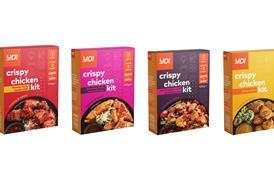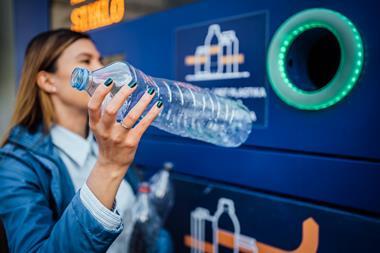More than two million bars were made in the first year, each selling for 2d.Today, new parent company Masterfoods, an amalgamation of the Mars confectionery and petfood businesses, prides itself on keeping that price constant, claiming that the current 29p rsp is roughly the same in real terms. It is this constant which led to the Mars bar becoming an economic barometer in the 1980s after an article in the Financial Times, entitled How Mars Bar Defeats Inflation', described the famous countline as "a currency of our time".
Ever since, the bar has been used by economic observers as a measure of the true value of the pound.
Becoming a favourite ration item during the Second World War, production was maintained and bars were supplied to the Allied armed forces. However, there was a shortage of gold ink for wrappers and the gold temporarily disappeared from the logo.
Mars was one of the first companies to take advantage of the arrival of commercial TV in 1956. Ad campaigns starring the likes of Petula Clark and Bob Monkhouse carried the strapline Stars Eat Mars'. Rumours that motor racing commentator Murray Walker later dreamed up the A Mars a Day Helps You Work, Rest and Play' slogan are a marketing myth, although the ad agency he was working for at the time did indeed pen it.
Three million bars are now made every day at the Mars factory in Slough. In 1999, global sales reached almost two billion bars.
{{FEATURES }}
Close menu
- Home
- Retail & Wholesale
-
Products & Suppliers
- Back to parent navigation item
- Products & Suppliers
-
Product Categories:
- Back to parent navigation item
- Product Categories:
- Alcoholic drinks
- Bakery
- Cereals & breakfast
- Cheese
- Chicken & poultry
- Chocolate
- Confectionery
- Crisps, nuts & snacks
- Dairy
- Fish
- Fresh produce
- Frozen
- Household
- Meat
- Own Label
- Sauces & condiments
- Seasonal
- Soft drinks
- Vaping
- Vegan & plant-based
- World foods
- Suppliers
- People
- Reports & Data
-
Topics A-Z
- Back to parent navigation item
- Topics A-Z
-
Popular topics:
- Back to parent navigation item
- Popular topics:
- Cost of living crisis
- Crime
- Deposit Return Schemes
- Finance
- Government & Regulation
- Health
- Inflation
- Loyalty
- Marketing
- Mergers & Acquisitions
- New Product Development
- Sourcing
- Supply chain
- Sustainability & environment
- Technology
- Ultra Processed Foods
- Vaping
- A-Z all topics
- Content by type:
- Events
- Ask iA (beta)
- Subscribe now
Sign in to comment on this article
Not logged in before? Register for FREE guest access today.
You will be able to:
- Read more stories
- Receive daily newsletters
- Comment on stories
Advert



















No comments yet